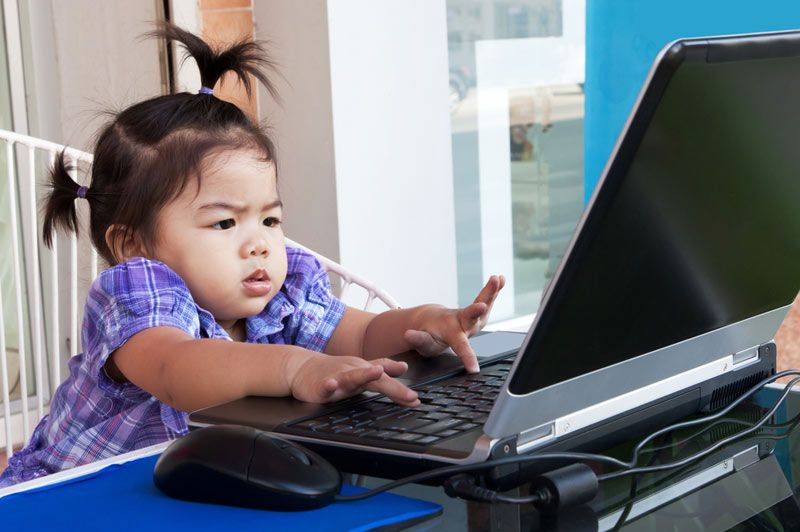Baby Brains May Be the Secret to Smarter Computers

Cognitive scientists hope to bottle up a baby's brain — and the imagination and air of possibility that comes with it — and use the result to make computers smarter.
"Children are the greatest learning machines in the universe," Alison Gopnik, a developmental psychologist at the University of California at Berkeley, said in a statement. "Imagine if computers could learn as much and as quickly as they do," said Gopnik, author of the books "The Scientist in the Crib" (William Morrow, 2000) and "The Philosophical Baby" (Picador, 2010).
Scientists such as Gopnik have known a healthy newborn brain contains a lifetime's supply of some 100 billion neurons; as a baby matures, these brain cells grow a vast network of synapses or connections (about 15,000 by the age of 2 or 3), which allow tots to learn languages and social skills, all the while figuring out how to survive and thrive in their environment.
Adults, meanwhile, tend to focus more on the goal at hand rather than letting their powers of imagination run wild. It's this combination — goal-minded adults and open-minded children — that may be ideal for teaching computers new tricks, the researchers suspect.
"We need both blue-sky speculation and hard-nosed planning," said Gopnik.
Gopnik and her colleagues are tracking the cognitive steps that children use to solve problems in the lab, and then turning the blueprint into computational models.
Their various experiments, whether using different-colored lollipops, spinning toys or music makers, suggest babies, toddlers and preschoolers are already testing hypotheses, estimating statistical odds, and coming to conclusions based on old and new evidence. This childlike exploratory and "probabilistic" reasoning could make computers not just smarter, but more adaptable and more human, the team says.
Sign up for the Live Science daily newsletter now
Get the world’s most fascinating discoveries delivered straight to your inbox.
"Young children are capable of solving problems that still pose a challenge for computers, such as learning languages and figuring out causal relationships," Tom Griffiths, director of UC Berkeley's Computational Cognitive Science Lab, said in a statement. "We are hoping to make computers smarter by making them a little more like children." [11 Facts About a Baby's Brain]
For instance, in one experiment, preverbal babies are shown two jars, one holding more pink lollipops than black and the other more black than pink. Next, the researchers cover one lollipop in each jar to hide its color and then remove and place that lollipopin a covered canister next to the jar. The babies are then allowed to take a lollipop, and in most cases, rather than randomly choosing a side, they crawl toward the canister closest to the jar with more pink lollipops.
"We think babies are making calculations in their heads about which side to crawl to, to get the lollipop that they want," said study researcher Fei Xu, UC Berkeley psychologist.
The researchers foresee childlike computers that could interact more intelligently and responsively with humans, resulting in better computer tutoring programs and phone-answering robots, among other technologies, including artificial intelligence.
This spring, Gopnik, Griffiths and other UC Berkeley psychologists, computer scientists and philosophers plan to launch a multidisciplinary center at the campus's Institute of Human Development to pursue further this line of research.
Follow LiveScience for the latest in science news and discoveries on Twitter @livescience and on Facebook.
Jeanna Bryner is managing editor of Scientific American. Previously she was editor in chief of Live Science and, prior to that, an editor at Scholastic's Science World magazine. Bryner has an English degree from Salisbury University, a master's degree in biogeochemistry and environmental sciences from the University of Maryland and a graduate science journalism degree from New York University. She has worked as a biologist in Florida, where she monitored wetlands and did field surveys for endangered species, including the gorgeous Florida Scrub Jay. She also received an ocean sciences journalism fellowship from the Woods Hole Oceanographic Institution. She is a firm believer that science is for everyone and that just about everything can be viewed through the lens of science.












